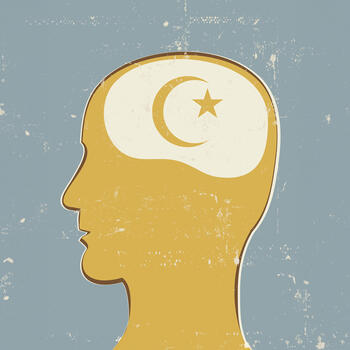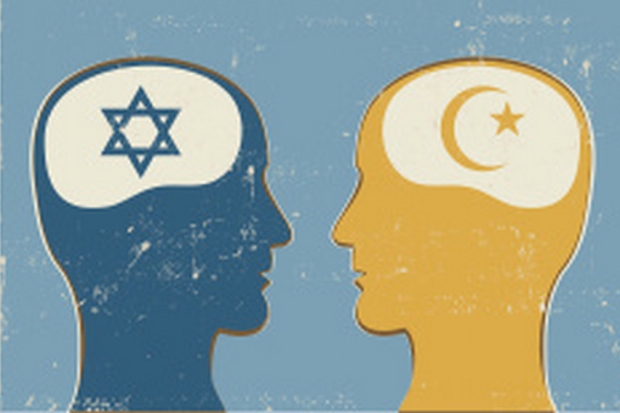OTAN News
Understanding and Countering Antisemitism and Islamophobia in Schools
This article written by Rachael Fugardi, Jaci Jones, Caleb Kieffer, and Alon Milwicki from the Learning for Justice website presents facts about both Islamophobia and Antisemitism. With the conflict occurring in the Middle East, the rise in both is also taking place in our schools. The purpose of sharing this article is to “nurture...interest in understanding and engaging with what is happening in and beyond [our] communities... And we must do so in ways that reject bigotry.”
To emphasize inclusion, the article begins with an “understanding of what Islamophobia and antisemitism are.”

Islamophobia is fear and hostility directed toward the religion of Islam and Muslims.
“Islam is a world religion of approximately 1.9 billion people of various ethnicities. While not all Arabs are Muslim, Islamophobia is often connected to anti-Arab hate...because Islam has been associated with Arab people.”
Islamophobia manifests in various ways and is explained in detail by the coalition of multifaith leaders committed to “challenging anti-Muslim bigotry” with the Shoulder to Shoulder Campaign. Summarized here, Islamophobia is categorized into five “I’s.
Institutionalized Islamophobia: Violations of civil rights and anti-Islamic legislation
Ideological Islamophobia: Organized groups devoted to spreading anti-Muslim rhetoric and conspiracy theories. Over 30 of these groups have been designated as hate groups by the Southern Poverty Law Center (SPLC).
Interpersonal Islamophobia: Includes incidents like hate crimes, harassment, and bullying of those who are or perceived to be Muslim.
Internalized Islamophobia: Some Muslims might internalize anti-Muslim stereotypes and tropes, such as followers of Islam being less civilized or more prone to violence than other people.
Islamophobia can also be intersectional: People who are Islamophobic may also adhere to white supremacist ideology or push other forms of discrimination.

Antisemitism is broadly defined as prejudice and hatred toward Jews, both as individuals and as a group, because of their Jewish identity.
“Approximately 15 million people worldwide identify as Jewish, with roughly 7 million in the United States.”
Antisemitism “manifests in microaggressions and stereotypes” when ignored “allows justification of harassment, dehumanization and violence.” Some prominent examples of antisemitic tropes include the following:
Vilifying Jews as powerful puppet masters who control governments and institutions. “This includes global conspiracies about secret societies and economic power.”
Associating Jewish people with greed and money. “This stereotype suggests that Jews are inherently obsessed with wealth...feeding into age-old prejudices that paint Jewish people as untrustworthy...”
Denying or distorting the Holocaust. “Undermining historical facts about the genocide of 6 million Jews during World War II.”
Accusations of disloyalty to the U.S. or “dual loyalty” claims. “Falsely accuses Jewish Americans of prioritizing Israel’s interests over those of the U.S.”
Blood libel and deicide. “These historical accusations falsely claim that Jews engage in ritualistic murder...for religious purposes.”
The article further explains how to recognize how this bias shows up in schools and leads to articulating ways “to cultivate communities and affirmation for all. Furthermore, the article shares stories from parents, implicit bias with well-intentioned educators, ignoring issues of race, religion and ethnicity to “ensure equality,” and media coverage of world events. For more information, consult the article’s link at the top of the page.
Article Recommendations
- Build inclusive classroom culture. Examine classroom spaces and curricula on classroom walls and school hallways. “Are all students’ identities reflected in those quotes, artworks or posters?”
- Build competency to facilitate difficult conversations. Educators need to recognize “their own perspectives and biases, reflect on their own identities and begin to understand how those impact their own competencies with certain critical topics.” Resource: Let's Talk! guide
- Address hate and bias when they arise in your classroom or school community. Resource: Speak Up at School guide which include four Speak UP Strategies 1.) interrupt 2.) question 3.) educate 4.) echo. “Using at least one of these strategies whenever you encounter hate or bias can confront the prejudiced comment and support the targeted person/s.”
- School administrators should create a response plan for hate incidents. Resource: Responding to Hate and Bias at School guide
Education broadens the mind and heart. With structured, careful thought, classroom discussions can lead to a better understanding of people with different identities, differing viewpoints, and religious beliefs.



